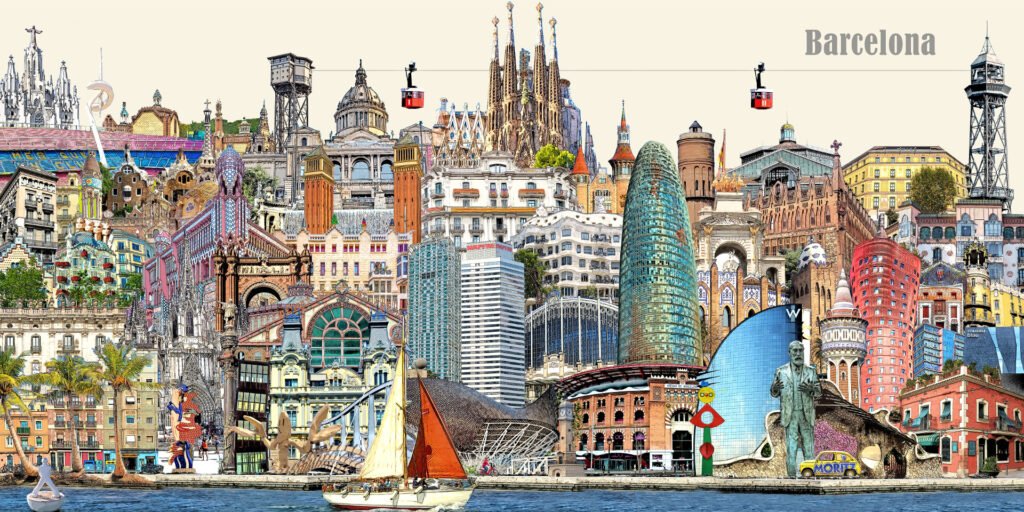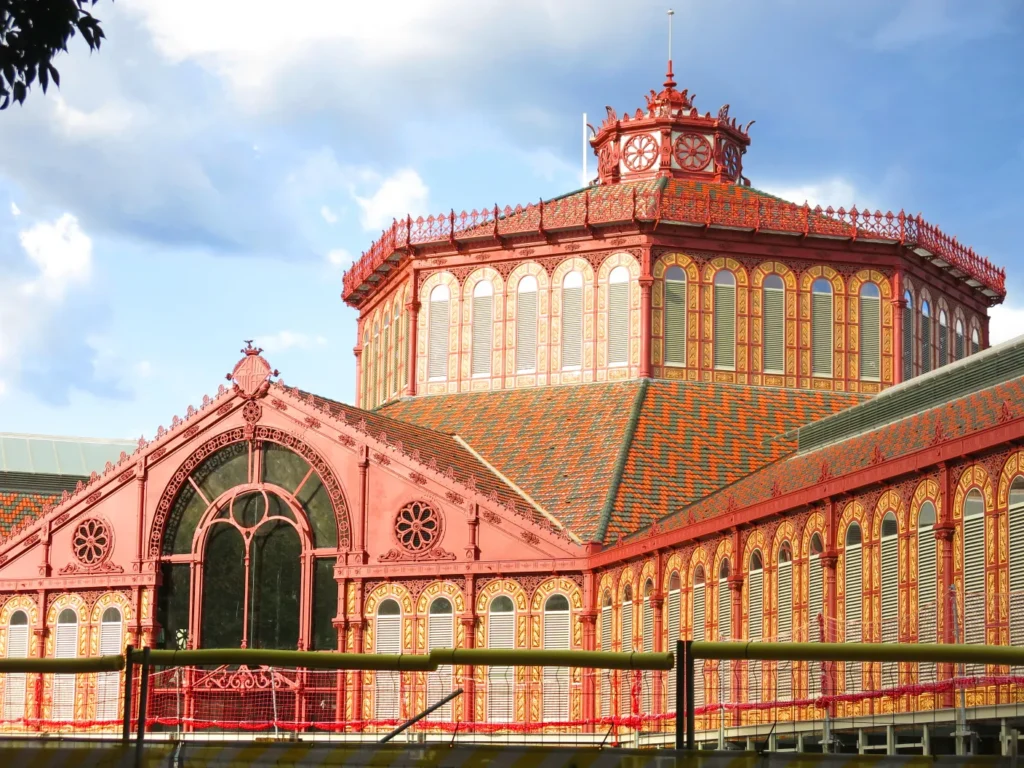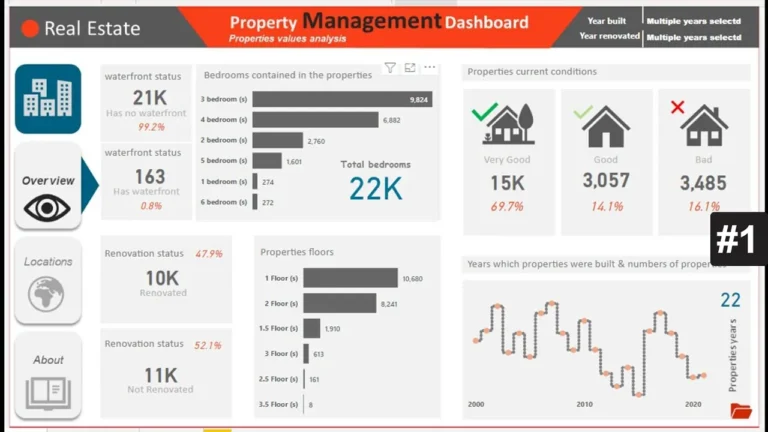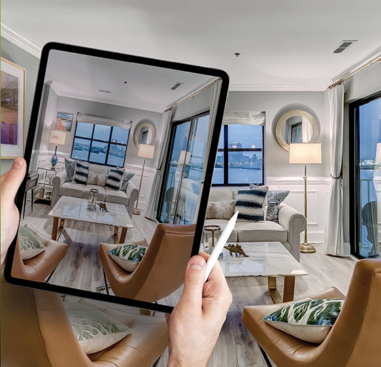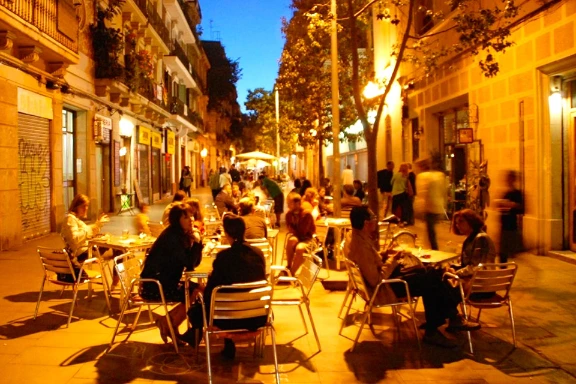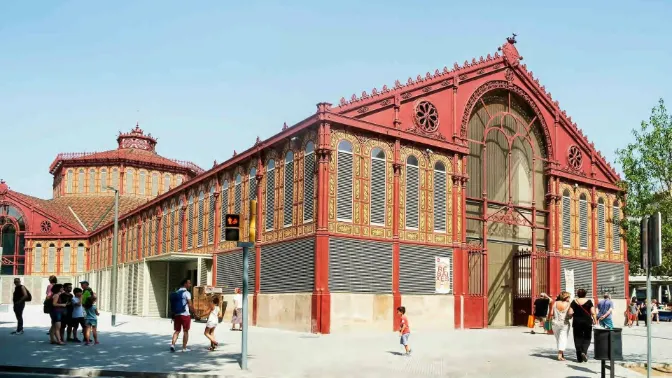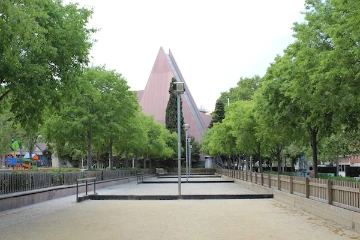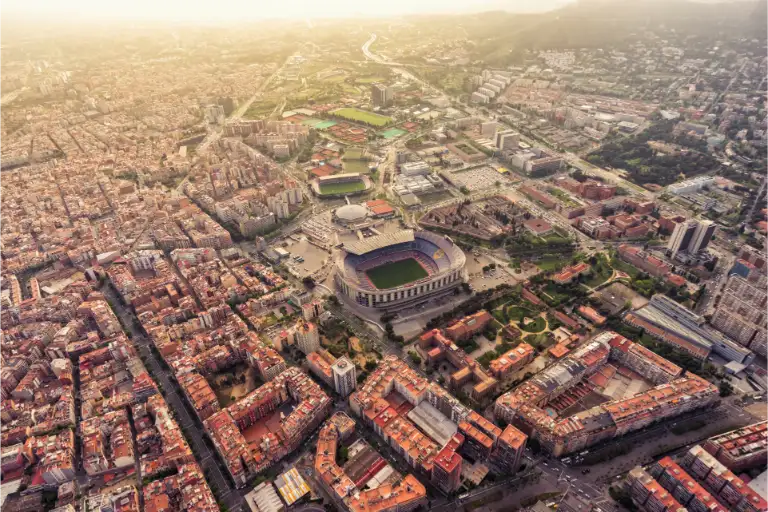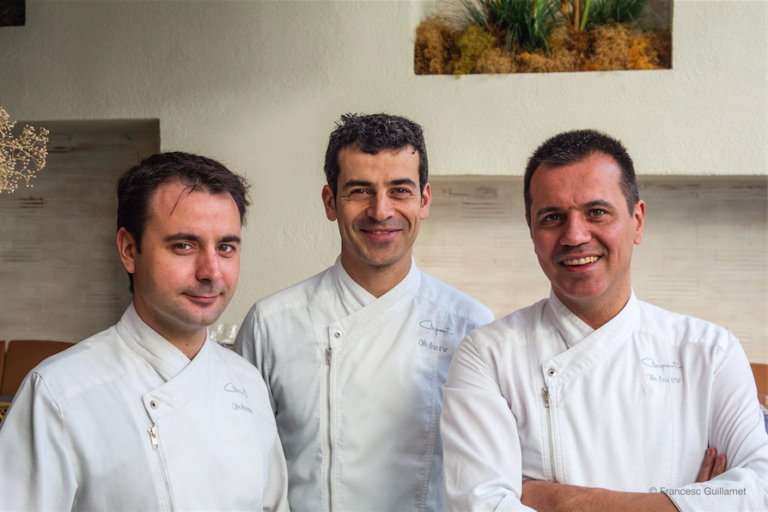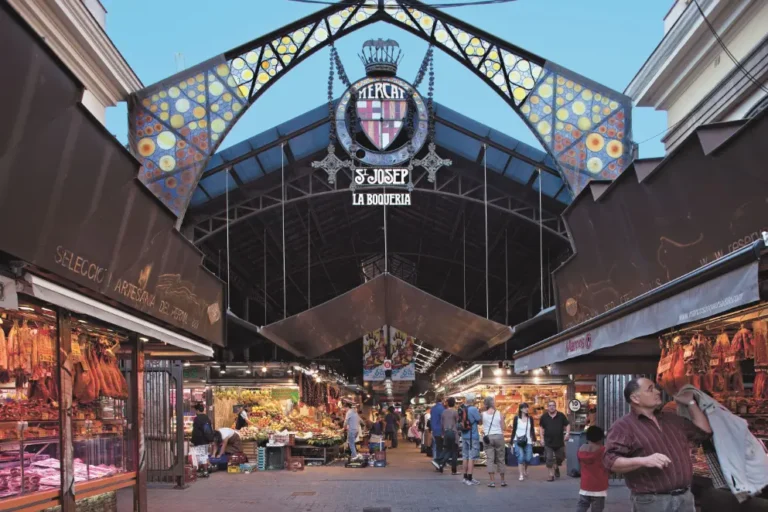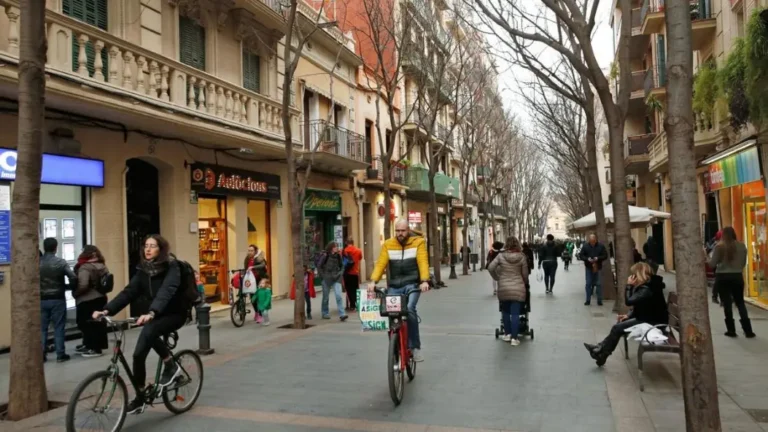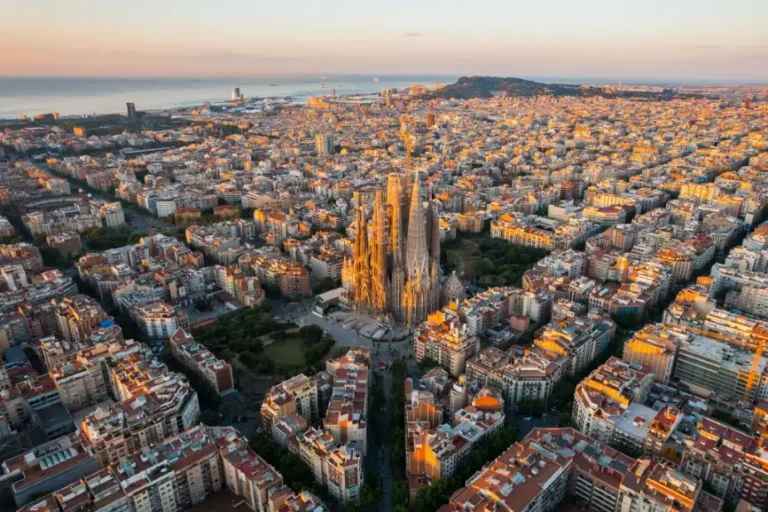The 10 Most Popular Neighborhoods for Expats in Barcelona:
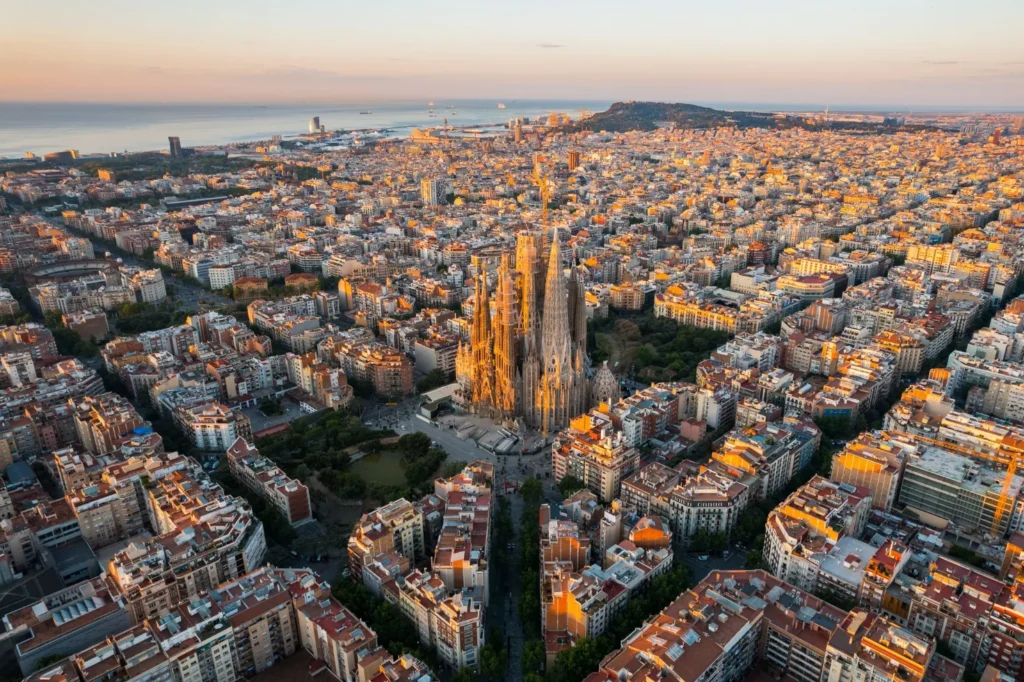

Barceloneta, Barcelona
Barceloneta is old fishermen’s Barcelona—narrow streets, laundry on the balconies, and the Mediterranean a few steps away. The grid is tight, the buildings are low, and it has that salty, lived-in feel. In the last decade you’ve got more modern apartments on the seafront, but the heart of the barrio is still traditional and a little scrappy (in a good way).
- Beach-first living: you’re on the sand in minutes—morning swims, evening walks.
- Character: casas de pescadors, tight lanes, vibrant market life around Mercat de la Barceloneta.
- Connectivity: quick to El Born, the Gothic Quarter, and Port Vell; L4 Metro, buses, and easy cycling.
Pros
- Beach access: unbeatable for daily sea time (it’s not the Costa Brava, but it’s your backyard).
- Seafood & tapas: proper classics and lively xiringuitos in season.
- Walk-everywhere: Born, Gothic, and central hubs are on foot or a short ride.
Cons
- Tourism overload: summer gets crowded; weekends feel like a festival.
- Noise & nightlife spillover: busy evenings by the beach and along Joan de Borbó.
- Older stock: many walk-ups without lifts; salt air can age facades, metalwork, and windows faster.
Micro-areas to know
- Inner grid by the market: most “local” feel; pick quieter lanes one or two streets back from the beach.
- Passeig Marítim / W Hotel end: views and new builds but busier, pricier, and more nightlife.
- Joan de Borbó corridor: super convenient yet traffic-heavy; go for upper floors or rear orientations.
- Port Vell side: handy for marina life; still touristy, but some calmer streets.
Who it suits
- Beach-first buyers who want a daily swim and don’t mind summer crowds.
- Students/young professionals who like energy, cafés, and quick hops to the center.
- Mid-term investors targeting 6–11-month stays (expats, students, relocations). Short-stay licenses are tightly controlled citywide.
Buying notes (street-level)
- Check the stairs: many buildings are sin ascensor; 4th floor walk-ups look great in photos—think about groceries in August.
- Salt & humidity: look for recent window upgrades, proper ventilation, and no mildew in wardrobes/corners.
- Soundproofing: double-glazing makes a real difference near the beach/avenues.
- Community rules: ask about holiday-rental bylaws and any façade/roof works coming up.
My two bits: Barceloneta is pure energy. If you want quiet, choose upper floors on inner lanes. If you want buzz, the seafront is a front-row seat.
Pro tip: One street back from the beach = fewer party goers at 2am, same sea breeze at 8am. Best of both worlds.
The 10 Most Popular Neighborhoods for Expats in Barcelona:
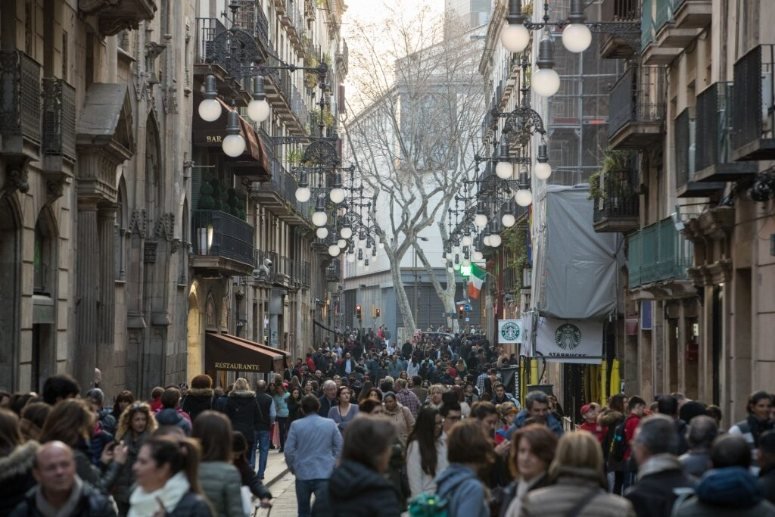
Gothic Quarter (Barri Gòtic), Barcelona
Architecture: a dense maze of medieval streets, Gothic churches, Roman fragments, and hidden squares. Stone everywhere; sunlight is a luxury on the lower floors.
Origins: the heart of old Barcelona—layers of history from Roman to 19th-century restorations.
Pros
- Historic charm: living museum vibes—cathedral bells, ancient façades, postcard corners.
- Central, walk-everywhere: quick hops to Born, Ramblas, Plaça Catalunya, and the waterfront.
- Atmosphere: cafés tucked into tiny plazas; great photo walks right outside your door.
Cons
- Tourist density: busy most days, late nights on weekends around hot spots (Plaça Reial, Ramblas edges).
- Small/older stock: many walk-ups, quirky layouts, limited light/ventilation on lower floors.
- Noise & nightlife spillover: bar routes can stay loud; expect bin trucks and delivery traffic early.
- Upkeep: humidity and old windows; periodic façade/roof works are common.
Micro-areas to know
- By the Cathedral / Plaça del Rei: stunning stonework; go higher floors for light and quiet.
- Jewish Quarter (El Call): tiny lanes, big history; wonderfully atmospheric, often dim on lower levels.
- Sant Just–Fernandina pockets: pretty squares and church views; choose streets off the main flow.
- Edges toward Via Laietana or La Rambla: most foot traffic—pick rear orientations or upper floors.
Who it suits
- History lovers who want the old-city feel and don’t mind some quirks.
- Pied-à-terre seekers using the home occasionally, happy to trade space for location.
- Photographers/creatives who thrive on texture, cafés, and street life.
Maybe look elsewhere if you want lots of light, elevators, parking, or quiet family living—try Eixample, Gràcia, or parts of Les Corts.
Buying notes (street-level)
- Light & ventilation: prioritize corner units, upper floors, or wider streets; check for damp in wardrobes and behind furniture.
- Soundproofing: double glazing matters here—open windows can mean bar chatter till late on some routes.
- Community health: read meeting minutes; older buildings often have façade/roof/lift projects in the pipeline.
- Layout reality check: charming beams s
The 10 Most Popular Neighborhoods for Expats in Barcelona:
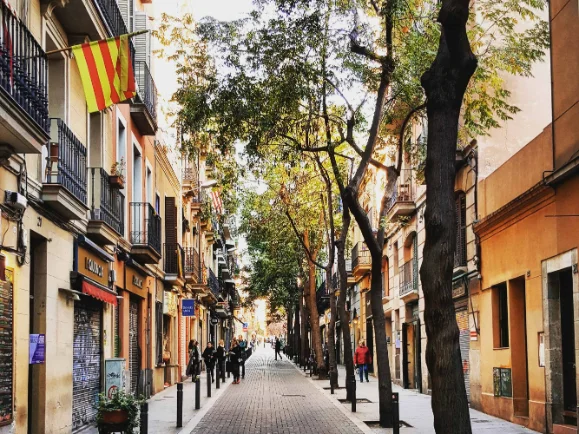
Gràcia, Barcelona
Architecture: a mix of bohemian workshops, Modernista gems, and traditional Catalan low-rise blocks around busy little plazas. Narrow streets, human scale, and plenty of texture.
Origins: once an independent village, annexed in the 19th century—hence the strong small-town vibe inside the big city.
- Plaza life: plaça del Sol, plaça de la Vila de Gràcia (clock tower), plaça de la Virreina—grab a vermut and you’re part of it.
- Pedestrian feel: pacified streets and super-walkable blocks; bikes everywhere.
- Culture on tap: indie cinemas (hello, Verdi), galleries, live music, and the famous Festa Major de Gràcia each August.
Pros
- Local vibe: genuine neighborhood energy and a strong sense of community.
- Car-light living: walking and cycling beat driving; great for daily errands.
- Food & drink: tapas crawls, natural wine bars, cafés with real character.
- Connections: Metro L3 (Fontana), L4 (Joanic), L5 (Diagonal/Gràcia) within reach; plenty of buses.
Cons
- Parking: very limited street parking and few garages (could be a pro if you want fewer cars).
- Prices: popularity pushed values up; renovated homes in prime pockets are not cheap.
- Bar noise: plazas and bar streets can be lively late—choose your block carefully.
Micro-areas to know
- Vila de Gràcia: the classic grid around the main plazas—most “Gràcia” feel; pick streets just off the bars for quieter nights.
- Camp d’en Grassot i Gràcia Nova: slightly wider streets toward Eixample; often better light and more elevator buildings.
- La Salut: up toward Park Güell; greener, some views, more stairs and slopes.
- Vallcarca i els Penitents / El Coll: hillside living, steps and lifts; bigger views, quirkier access.
Who it suits
- Creatives and remote workers who want cafés, plazas, and character on the doorstep.
- Couples and small families happy to trade car convenience for community and walkability.
- Long-term buyers who value neighborhood feel over square meters.
Buying notes (street-level)
- Noise mapping: visit at 10pm and again on a weekend morning; bar streets change personality after dark.
- Light & ventilation: many flats face narrow lanes—upper floors and corner positions help; check for damp in wardrobes/corners.
- Elevator reality: plenty of walk-ups; if stairs are a no, focus on newer or corner buildings with lifts.
- Community minutes: look for façade/roof works planned, and any noise complaints logged for bar squares.
- ROI expectations: strong demand but tight yields in prime pockets—better for lifestyle or long-term holding than aggressive cash flow.
My two bits: this is the hipster heart—laid-back, a bit oddball, very welcoming. It can feel like you’ve “left” Barcelona without leaving the center. I’d live here happily. As an investment, pick carefully; for pure vibe, it’s hard to beat.
Pro tip: For a home, choose a side street away from bar clusters. You keep the plazas, lose the 1am chorus.
The 10 Most Popular Neighborhoods for Expats in Barcelona:
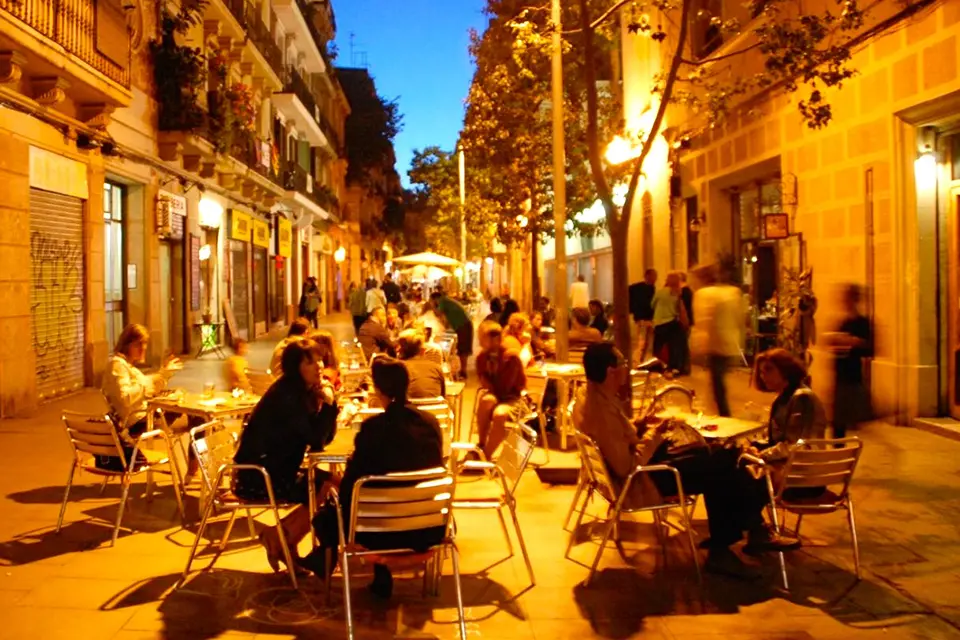
Poble Sec, Barcelona
Architecture: traditional 19th-century blocks—some beautifully refurbished, others mid-reno or still awaiting love. Expect walk-ups, balconies over narrow streets, and the odd modern infill near Paral·lel.
Origins: a historic working-class barrio developed in the late 1800s at the base of Montjuïc—close to theatres on Paral·lel and a quick hop to the center.
- Authentic feel: fewer tour groups than the old town; proper neighborhood life.
- Tapas central: Carrer de Blai for pintxos—busy on fair-weather evenings (for good reason).
- Connections: L2/L3 Paral·lel and L3 Poble Sec Metro stops, buses up/down Paral·lel, and the Montjuïc funicular.
- Green & culture: Montjuïc parks, museums, venues, and sunset viewpoints a short climb away.
Pros
- Local atmosphere with day-to-day services and classic cafés.
- Food value: some of the city’s best price-to-quality tapas streets.
- Location: central enough without the Gothic/Born crowds; quick to Sant Antoni & Plaça d’Espanya.
Cons
- Seller expectations: pockets of very optimistic pricing; inspect comps and bank valuations carefully.
- Night noise: Blai and theatre zones get lively; bin trucks and deliveries are part of the soundtrack.
- Stairs: plenty of buildings are sin ascensor; upper floors = view/breeze but also a workout.
Micro-areas to know
- Carrer de Blai / Plaça del Sortidor: foodie core; pick side streets or upper floors for quieter nights.
- Paral·lel avenue edge: best transport and theatres; heavier traffic—favor rear orientations/corner units.
- Montjuïc slopes: more steps, more breeze, and pockets with better light/views.
- Tres Xemeneies / Port side: parks and open feel; mixed stock with some newer buildings.
Who it suits
- Food lovers and night owls who want the tapas scene on their doorstep.
- First-time buyers and creatives who value character over perfection.
- Mid-term investors aiming at 6–11-month rentals for expats/students near the center.
Buying notes (street-level)
- Light & ventilation: many narrow streets—upper floors, corner positions, and rear patios help.
- Noise mapping: visit at 10pm on a weekend; Blai/Paral·lel energy isn’t for everyone.
- Elevator reality: if stairs are a no, filter hard for lift buildings or lower floors.
- Community minutes/ITE: check for façade/roof/lift projects and any upcoming assessments.
- Pricing sanity check: compare to recent solds; ask for the tasación (bank valuation) if numbers feel dreamy.
My two bits: great location, great eating, genuine feel. Ten years ago was the “steal”; today you need discipline on price. I’d live here—if I found a flat that wasn’t priced like a fantasy.
Pro tip: Many listings say “refurbished” when it’s paint and staging. Ask exactly what was refurbished and request receipts for works (windows, electrics, plumbing, insulation).
The 10 Most Popular Neighborhoods for Expats in Barcelona:
Sant Antoni, Barcelona
Architecture: classic Eixample grid with Modernista touches—elegant corner chamfers, balconies, and a mix of refurbished and original interiors. The star is the iron-and-glass Mercat de Sant Antoni, wrapped by wide pavements that fill with cafés and weekend life.
Origins: the neighborhood grew around the market in the late 19th century, and you still feel that “market village” energy today.
- Superilla vibe: stretches of Comte Borrell and nearby streets are heavily pedestrian-prioritized—terraces, trees, kids on scooters.
- Food scene: new-wave cafés, bakeries, and natural wine spots alongside old-school bars.
- Sunday market: collectibles and book stalls around the market—very neighborhood Barcelona.
- Great connections: L2 Sant Antoni, L1 Urgell, L3 Poble Sec/Paral·lel on the edges; flat terrain for walking/biking.
Pros
- Trendy but lived-in: a genuine local vibe with new restaurants and cafés that aren’t just for visitors.
- Market lifestyle: fresh produce downstairs changes how you eat at home.
- Walkability: wide sidewalks, bike lanes, and calmer streets thanks to the superilla.
- Central, not chaotic: you’re near Raval and Poble Sec without being swallowed by their crowds.
Cons
- Prices rising: popularity pushed values up—the best streets by the market are no longer “hidden gems.”
- Varied stock: some “refurbs” are cosmetic at best; elevators aren’t universal.
- Edge effects: blocks right on Ronda de Sant Antoni or Paral·lel can feel busier and noisier.
Micro-areas to know
- Around the market (Borrell/Tamarit/Manso): prime Sant Antoni feel—terraces, cafés, and frequent street life.
- Toward Urgell (L1): more Eixample-like; good light, wider streets, and a touch quieter.
- Paral·lel edge: best for theatres/transport; pick interior or upper-floor orientations for peace.
- Ronda de Sant Antoni: reworked public space—handy, but choose your exact block for noise.
Who it suits
- Food-lovers & café people who want everything within a 10-minute walk.
- Remote workers who like lively streets by day and calmer nights one block off.
- Long-term buyers who want central comfort without the old-town maze.
Buying notes (street-level)
- Check the “refurb”: ask what was actually replaced—wiring, plumbing, windows, insulation. Paint ≠ renovation.
- Light & orientation: corner chamfers and upper floors get the sun; interior patios can be dim.
- Elevator reality: if you want a lift, filter hard—many fincas still rely on stairs.
- Community minutes & ITE: look for planned façade/roof/lift works and any special assessments.
- Noise mapping: visit at 9am (deliveries) and 10pm (terraces) to understand your block’s rhythm.
My two bits: Sant Antoni was off the radar for years; now it’s having a moment. I like the everyday, middle-class feel and the food scene. The market is gorgeous—parts feel underused—but the streets around it are the draw. Good place to live; for investment, comps can be tricky because the stock is so varied.
Pro tip: Homes near the small parks and the superilla streets feel extra livable. If you can find one on a calmer side street by the market, even better.
The 10 Most Popular Neighborhoods for Expats in Barcelona:
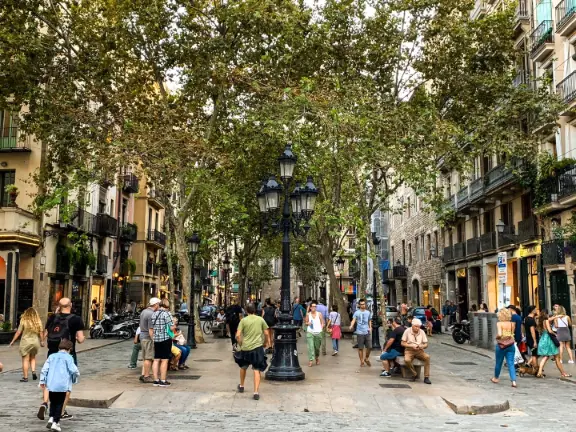
El Born (La Ribera), Barcelona
Architecture: medieval street plan with Gothic and Baroque buildings, stone façades, skinny lanes, and surprise plazas. Lots of boutiques, small galleries, and cocktail bars tucked into ground floors.
Origins: historic merchant quarter—warehouses, guild streets, and the gorgeous Santa Maria del Mar—with roots deep into the medieval period.
- Vibrant day-to-night energy: cafés and design shops by day; restaurants, wine bars, and speakeasies after dark.
- Central & walkable: quick to the beach, Parc de la Ciutadella, Palau de la Música, and the Gothic Quarter.
- Character: centuries-old buildings, hidden courtyards, and postcard streets around Passeig del Born.
Pros
- Vibrant: stacked with culture, dining, and nightlife—never boring.
- Central: you can walk to most places you care about; transit is easy.
- Storybook streets: architecture and atmosphere do a lot of the heavy lifting.
Cons
- Tourism & commercialization: it’s popular and it shows—crowded lanes, especially weekends.
- Cost: renovated units in prime spots are expensive for the size.
- Old-building realities: light/ventilation can be limited on lower floors; many walk-ups; humidity and noise vary by street.
Micro-areas to know
- Passeig del Born / Santa Maria del Mar: the postcard core—beautiful and busy; choose upper floors or rear orientations.
- Ciutadella edge (Passeig de Picasso): greener feel and quick park access; traffic on the perimeter, calmer inside.
- Carrer Princesa / Montcada: museum/boutique axis; lively by day, active evenings.
- Sant Pere pockets: more local, slightly less polished; sometimes better value within the district.
Who it suits
- City energizers who want restaurants, bars, and culture on the doorstep.
- Pied-à-terre buyers who’ll use it often and don’t need tons of square meters.
- Design/history lovers who value charm over drive-in convenience.
Maybe look elsewhere if you need regular parking, large/light interiors, or very quiet nights—try Eixample or parts of Gràcia for that.
Buying notes (street-level)
- Rent first if unsure: test a few months on your target streets; the vibe shifts a lot from morning to late night.
- Fixer-upper reality: old buildings can hide surprises—wiring, plumbing, structure, moisture. A “€100k” refurb can become “€200k” fast once permits and inspections kick in.
- Light & noise: prioritize corner units, upper floors, and double glazing; visit at 10pm and again at 8am.
- Community health: read minutes; check for façade/roof works, ITE status, and any special assessments.
- Usage planning: short-stay licenses are tightly regulated citywide—plan for mid-/long-term living or rentals.
My two bits: I love El Born—to visit. Living full-time isn’t for me: gorgeous, yes; crowded and noisy, also yes. My partner would happily buy here (and is looking). If the energy sings to you, I get it—the location is incredible.
Pro tip: For investments, budget a proper survey and a real renovation contingency. Ask to see permits and receipts for any “refurbished” claims before you pay a premium.
The 10 Most Popular Neighborhoods for Expats in Barcelona:
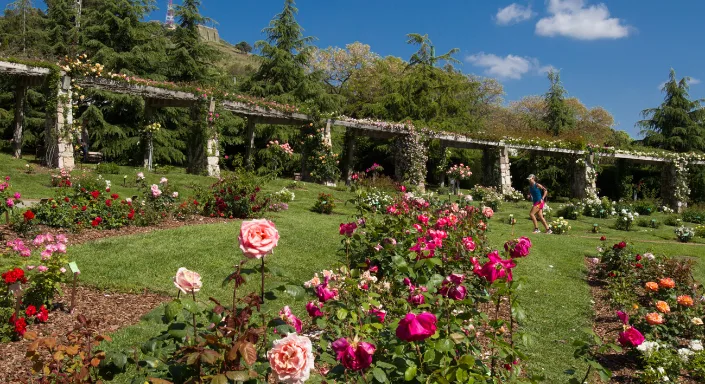
Sarrià–Sant Gervasi, Barcelona
Architecture: elegant modernist houses, villa-style streets, and spacious apartments with doormen and parking. Lots of greenery and hillside views—more suburban than central Barcelona.
Origins: a former independent village absorbed in the early 20th century; you still feel that “small town above the city” vibe.
- Peace & privacy: leafy streets, low noise, and buildings with elevators, concierge, and sometimes pools/gardens.
- Parks & views: Turó Park, Putxet gardens, and Tibidabo slopes for weekend walks.
- Schools corridor: close to many international & high-performing local schools.
- Connections: quick access to FGC (L6/L7) into Plaça Catalunya; drivers use Via Augusta and Ronda de Dalt.
Pros
- Quiet & residential: ideal for families and anyone craving calm.
- Space & storage: larger flats, terraces, and underground parking are common.
- Healthy living: green areas, sports clubs, and great running/walking routes.
Cons
- Disconnected feel: you’re a step removed from the city buzz (a pro for many).
- Cost: one of Barcelona’s most expensive districts, especially near Turó Park and Tres Torres.
- Car logistics: daily driving/parking in the center can be a hassle if you don’t live near an FGC stop.
Micro-areas to know
- Galvany / Turó Park: polished buildings, boutiques, cafés; pricey and highly sought-after.
- Les Tres Torres: wide streets, newer high-spec blocks, parking, concierge—family favorite.
- La Bonanova: villas and schools; calm, residential, good access to Ronda de Dalt.
- El Putxet i el Farró: hillside pockets with views; mix of classic and newer buildings.
- Sarrià village: charming old-town streets around Major de Sarrià; very local, neighborhood feel.
- Vallvidrera / Tibidabo / Les Planes: forested, semi-rural vibe with big views; check access & slopes.
Who it suits
- Families wanting space, quiet, and proximity to schools.
- Executives/remote workers who prefer calm homes and don’t need daily city-center nightlife.
- Long-term buyers prioritizing quality of life over being in the middle of the action.
Buying notes (street-level)
- Commute test: time your trip to the center at rush hour. If you’ll rely on FGC, live near stations like Sarrià, Les Tres Torres, La Bonanova, Muntaner, or Sant Gervasi.
- Parking & storage: confirm the parking space dimensions and access; bike rooms and trasteros add real value.
- Community fees: full-service buildings (concierge, pool, gardens) mean higher monthly charges—check the budget and minutes.
- Light & orientation: hillside streets can be shaded; prioritize south/west aspects and upper floors for sun.
- Energy upgrades: large flats can be costly to heat/cool—look for modern windows, insulation, efficient HVAC.
My two bits: this is the city’s “proper suburb”—beautiful and affluent. In most of Barcelona, a car is optional; here it’s useful unless you’re right by the FGC. If you want calm, space, and schools nearby, it’s hard to beat.
Pro tip: Map your daily logistics before you buy—work commute, school drop-offs, gym, and where you’ll park in the city if you drive in.
The 10 Most Popular Neighborhoods for Expats in Barcelona:
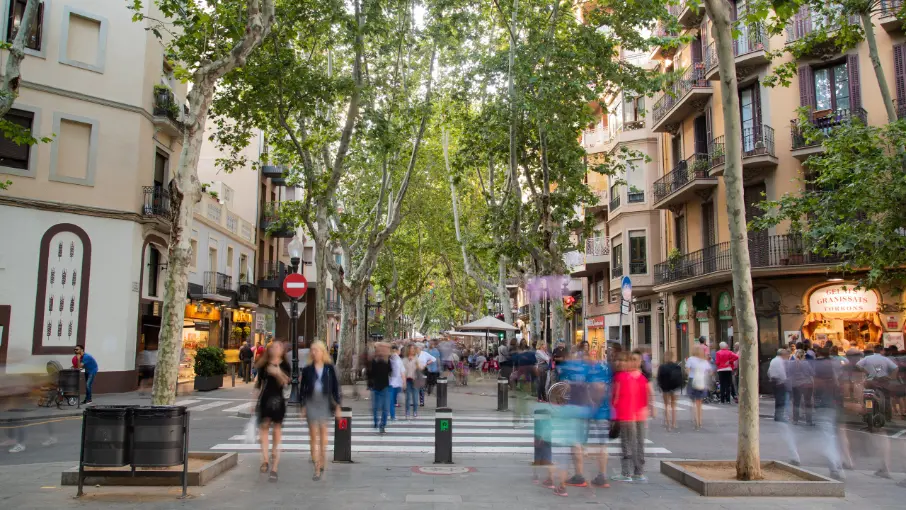
Poblenou, Barcelona
Architecture: once factories and smokestacks, now a mix of modern apartments, glassy offices, and cool loft conversions. You still see brick warehouses along Pere IV, but the skyline is shifting fast around 22@.
Origins: the city’s industrial engine—reimagined as Barcelona’s tech and innovation district. Think startups, design studios, and co-working spaces—plus real homes with a more relaxed, beach-adjacent feel.
- Innovation hub: 22@ brings jobs, cafés, and after-work hangouts; lots of young professionals.
- Beach access: Bogatell and Mar Bella beaches are close and less touristy than Barceloneta.
- Neighborhood spine: Rambla del Poblenou for weekend strolls, ice cream, and terrace life.
- Space: bigger flats and terraces than the old town; new builds with parking are common.
Pros
- Career + lifestyle: live near work if you’re in tech/creative fields, with the beach as your backyard.
- Modern comforts: elevators, parking, decent energy ratings; many buildings are newer.
- Value vs. center: more square meters for the money than Eixample prime (varies by pocket).
Cons
- Perpetual works: construction cranes and street works are part of the soundtrack in 22@.
- Speculative pricing: some sellers price like it’s already Silicon Valley—sanity-check comps.
- Connectivity feel: L4 helps (Llacuna, Poblenou), but it can feel a bit removed from the Gothic/Born buzz—could be a pro if you like calm.
Micro-areas to know
- Rambla del Poblenou: classic village vibe; best for daily cafés and terrace life—look one street off for quieter nights.
- 22@ core (Llacuna/Marina/Pere IV): new offices, new builds, and conversions; exciting but more cranes and dust.
- Diagonal Mar edge: bigger complexes, sea views, amenities; feels more “master-planned.”
- Beachfront (Bogatell/Mar Bella): summer energy, morning swims; premium for terraces and views.
- Parc del Centre / old town grid: calmer residential pockets with a neighborhood feel.
Who it suits
- Young professionals and remote workers who want modern homes and beach breaks.
- Families looking for newer buildings, elevators, parking, and parks.
- Long-term investors with a patient horizon tied to the 22@ growth story.
Buying notes (street-level)
- Construction check: visit weekdays; note active works near your block and how long they’ll last.
- Loft legality: if it’s a “loft,” confirm residential use is legal (not just a fancy office with couches).
- Specs that matter: double glazing, insulation, HVAC efficiency—seafront areas get wind/salt.
- Community minutes & ITE: new builds have fewer surprises; conversions can hide ones—read the paperwork.
- Transport reality: try the commute at rush hour; L4 + bikes/scooters work well, but plan your route.
My two bits: I loved Poblenou before 22@ took off. Today it’s the startup hub and the vibe is good, but pricing can get ahead of itself. Livable? Very. As an investment, I’d want a long-term thesis. The quick wins were years ago.
Pro tip: If you’ve got the budget (and patience), a legitimate warehouse-to-loft conversion can be special—just nail the permits and costs first.
Not an exhaustive list—just the barrios clients ask us about most. Got a specific street or building in mind? Ask away.
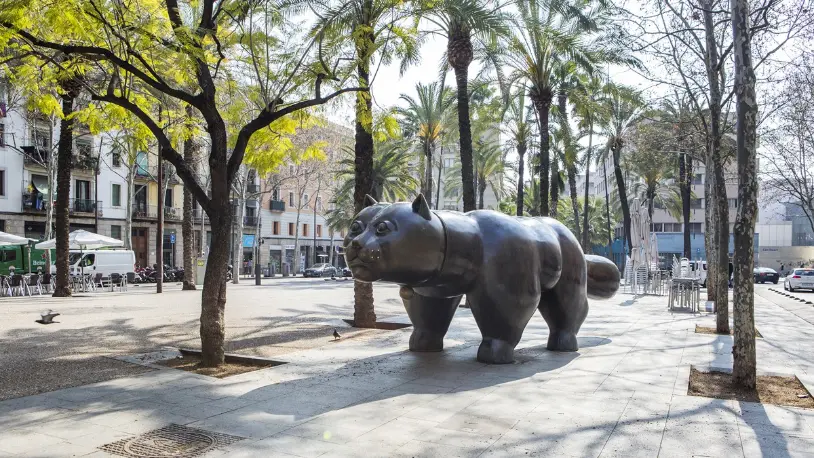
El Raval, Barcelona
Architecture: a mash-up of medieval streets, Gothic and Gothic-Revival gems like Sant Pau del Camp (peaceful cloister, worth a pause), and big modern moves around MACBA—which doubles as Barcelona’s unofficial skate plaza. Warehouses-turned-lofts sit next to humble walk-ups; it’s eclectic by block.
Origins: once outside the old city walls, historically a working-class quarter dating to the Middle Ages—waves of migration have shaped its food, culture, and street life.
- Cultural mix: Eastern European, Middle Eastern, African, Latin American, and Catalan influences all on one street.
- Art & nightlife: galleries, live-music nooks, dive bars, and street culture clustered around MACBA/CCCB.
- Food with a backbone: places cooking for “their own” communities—spice and authenticity intact.
Pros
- Cultural diversity and serious culinary range.
- Nightlife & arts: from tiny venues to museum shows.
- Central location: quick to the Gothic Quarter, Sant Antoni, and the Ramblas metro arteries.
- Investment angles: some of the city’s best ROI—if you buy the right unit on the right street.
Cons
- Safety perception: certain streets can feel edgy late; pick routes and blocks with care.
- Overcrowding & noise: museum/events nights, bin trucks, bar spillover—sound travels in narrow lanes.
- Building condition: many walk-ups, variable maintenance; moisture and ventilation issues on lower floors.
Micro-areas to know
- Rambla del Raval: palm-lined boulevard, cafés, weekend buzz; choose upper floors or rear orientations for quieter living.
- MACBA / Plaça dels Àngels: museum core, skate culture, galleries—lively from afternoon to late.
- Joaquín Costa / Ferlandina: bars and indie spots; great fun, can be loud at night.
- Hospital / Carme corridors: very central, mixed stock; street-by-street due diligence is key.
- Sant Pau del Camp side: older stone fabric and pockets that feel calmer; still check night vibe.
Who it suits
- Food explorers and culture seekers who want diversity on the doorstep.
- Investors comfortable with block-by-block analysis and active management.
- Creatives/young buyers who prioritize character and location over pristine perfection.
Buying notes (street-level)
- Night check: visit your exact block at 10–11pm and again early morning; the vibe flips after dark on some routes.
- Light & air: narrow lanes = limited sun on lower floors—aim higher, corner units, or wider streets; look for double glazing and ventilation.
- Building health: read community minutes and ITE; confirm façade/roof/lift projects and any special assessments.
- Legal use: if it’s marketed as a “loft,” verify the residential status (no office-as-home surprises).
- Yield vs. risk: ROI can be strong, but pricing varies wildly street-to-street—anchor to real comparables and bank valuations.
My two bits: I like Raval—I even own a couple of investments here. The food is legit, the mix of people is real, and the returns can be solid. It is also uneven: a million-euro loft here, two streets over a tired flat that needs everything. Know your block, know your building.
Pro tip: Late at night, stick to well-lit main routes and move with friends. Keep your phone zipped away when walking.
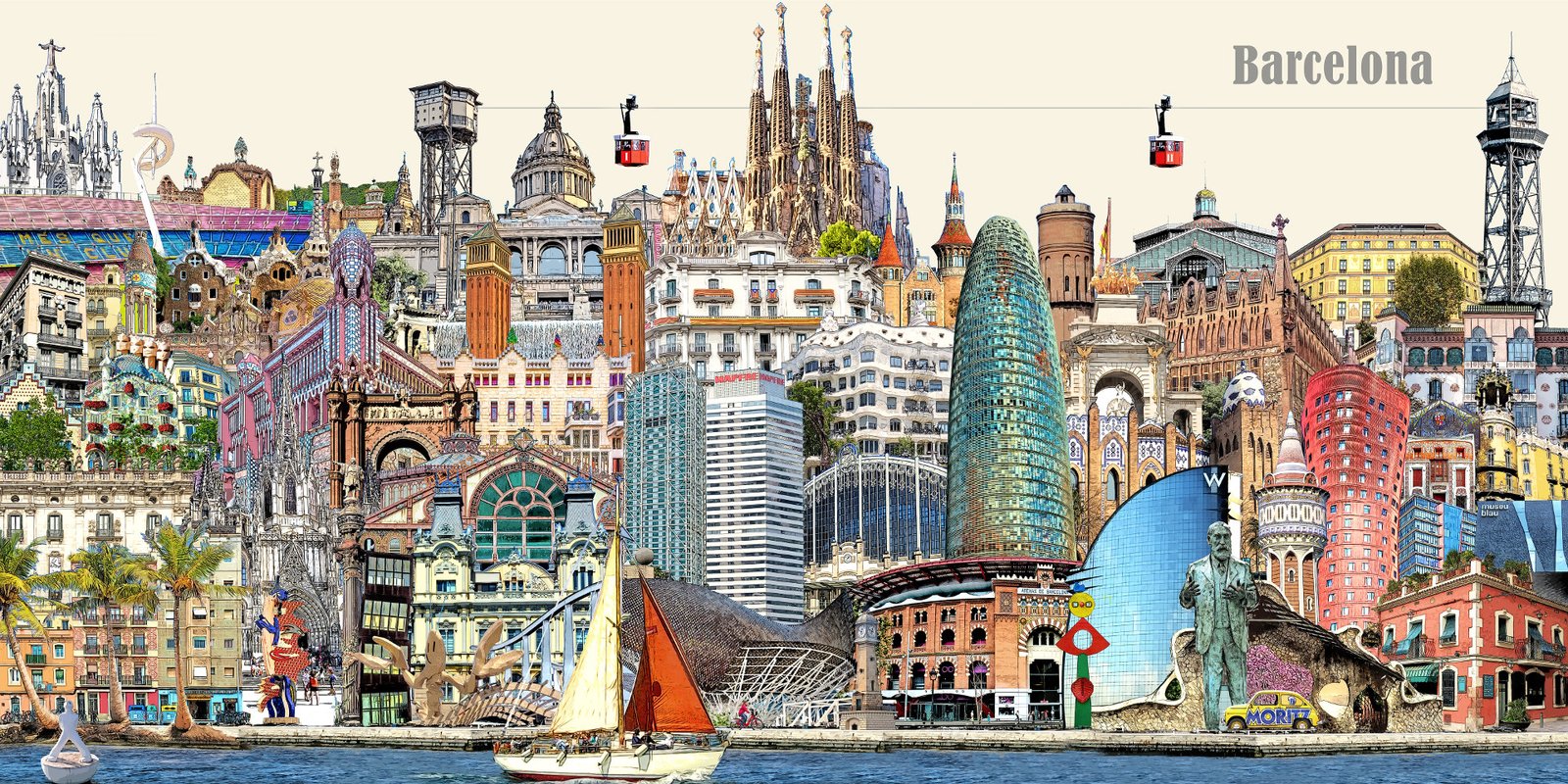
American Real Estate Experts In Barcelona to Find Your Dream Home
You want real estate agents who are focused on Barcelona – NOT all of Spain.
We live in Barcelona. We are the locals. We have bought our own properties, and have gone through the journey from buyer to owner many times with many clients.
We’re Americans in Barcelona who’ve been through this ourselves. We know the expat curveballs—paperwork, noise levels, stairs, elevators, neighborhoods that look great online but don’t fit real life. Tell us how you live and what you want to spend; we’ll guide you to the right neighborhoods and a short list of homes that actually fit your lifestyle and budget.
- We Speak Your Language (Literally)
- 10 years Real Estate Experience In Scottsdale, Arizona, United Sates
- 7 Years Real Estate Experience in Barcelona
- +34 636-383-338
- +34 636 383 338

